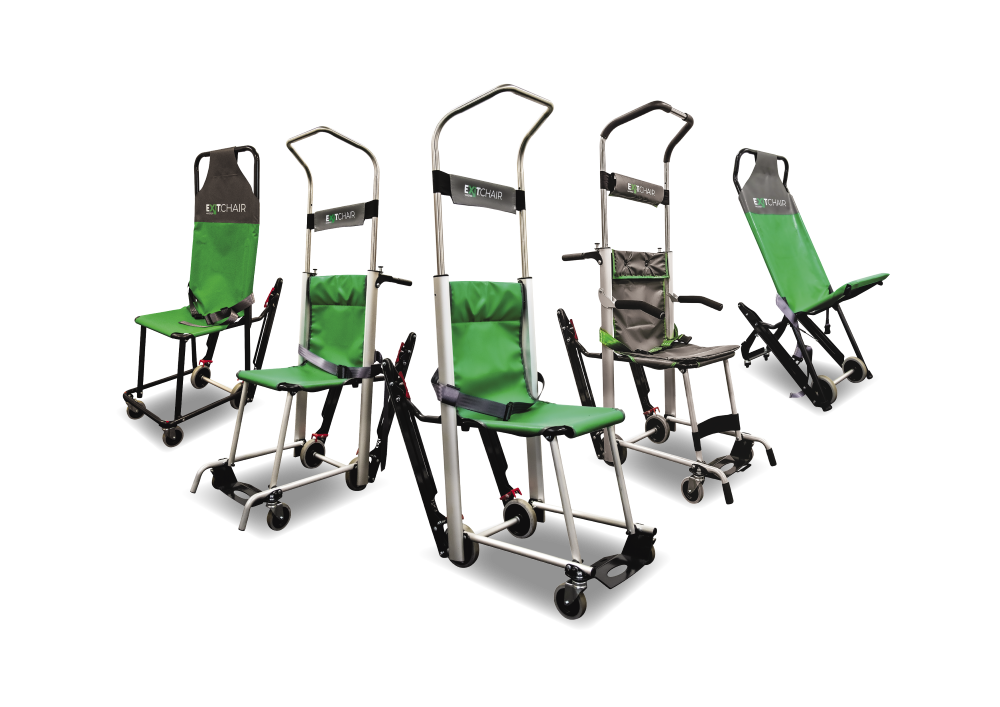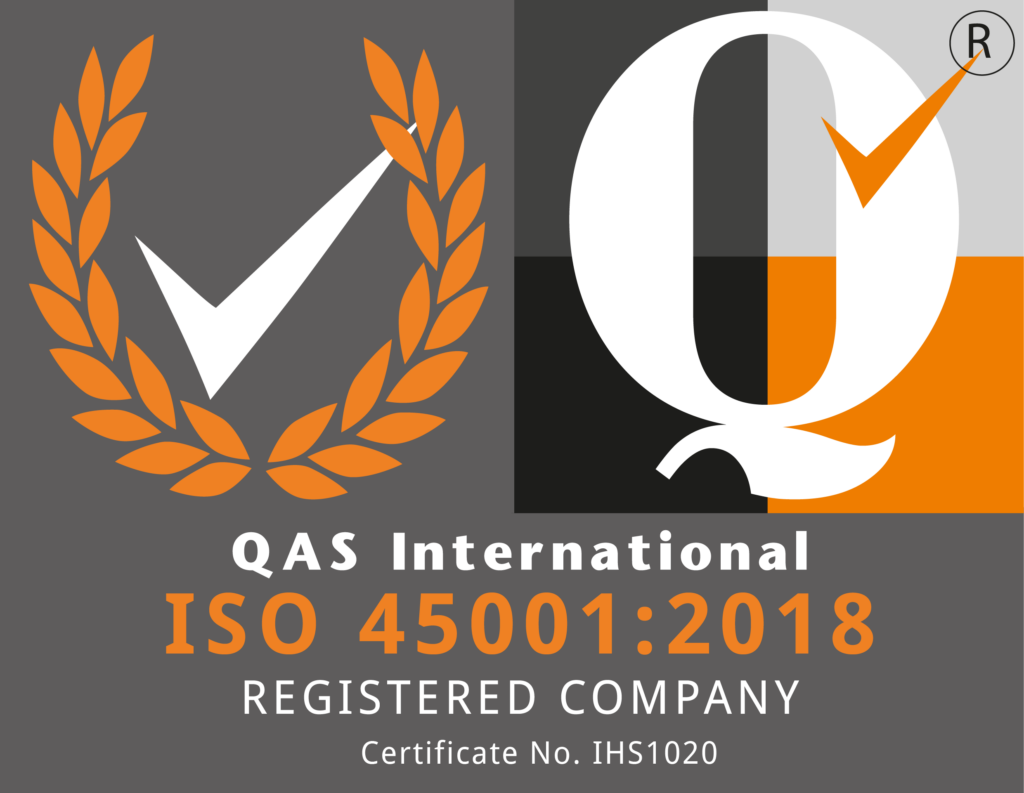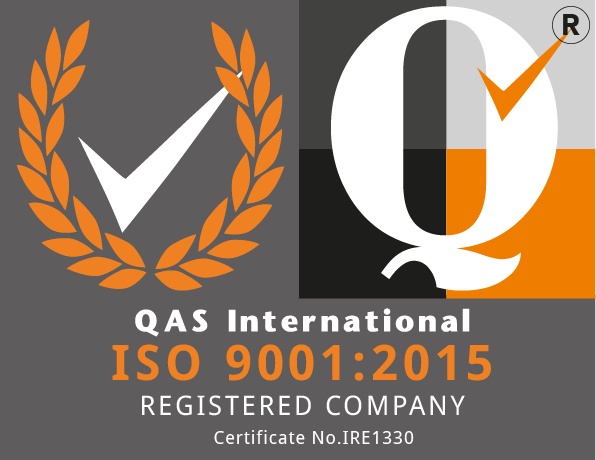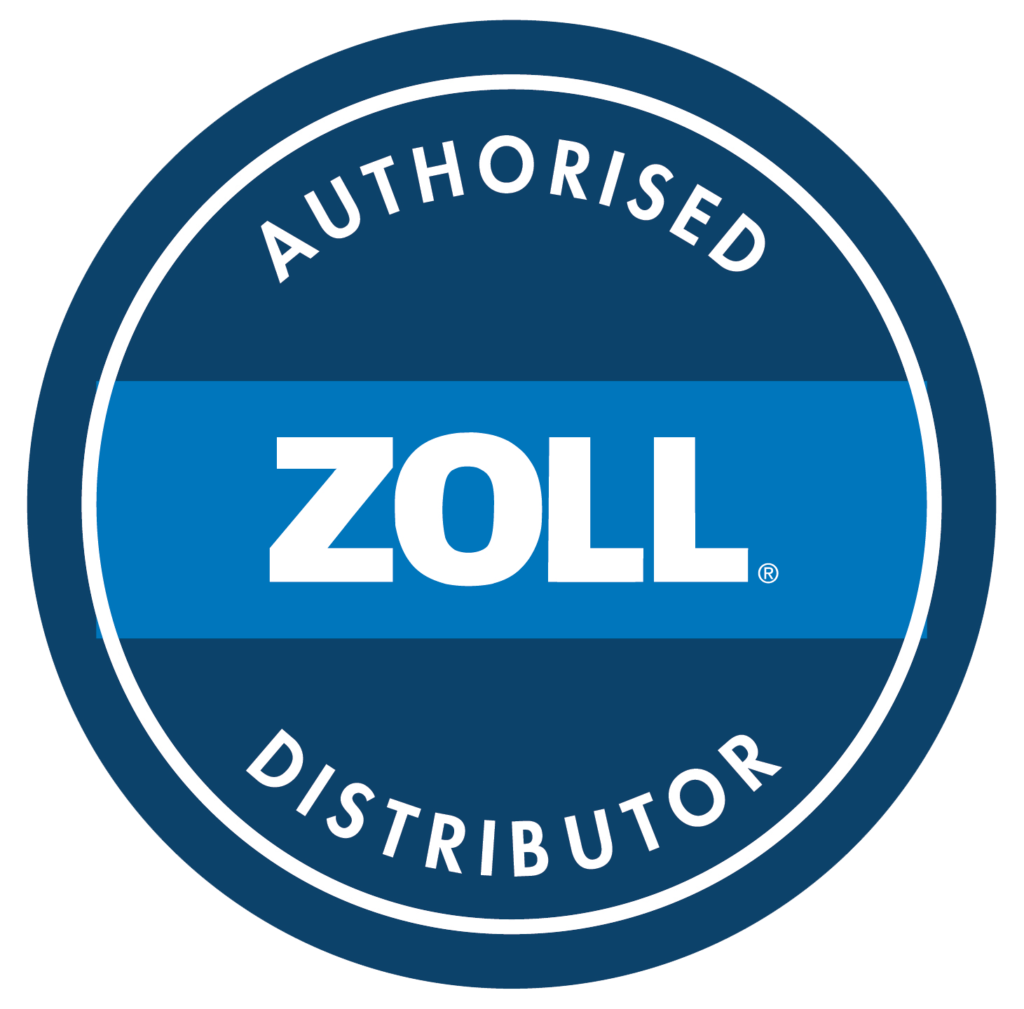CPD-Certified Evacuation Chair Instructors Course: Why? In many cases, building management aims to go beyond its minimum legal obligations to create environments that are universally accessible to as broad a group as possible. In line with these efforts to enhance accessibility, the CPD-Certified Evacuation Chair Instructors Course aims to equip participants with the skills and knowledge necessary to safely and effectively use evacuation chairs. This course is essential for those responsible for building management, safety, and evacuation procedures, ensuring that individuals with mobility impairments can be evacuated safely during emergencies. By training instructors in evacuation chairs, building management can further their commitment to accessibility and safety for all individuals.
Depending on the user’s physical requirements, an evacuation chair for stairs can safely move people with mobility impairments in emergency evacuation situations. Anyone responsible for operating an evacuation chair must receive proper training to ensure they are competent and can use it correctly and safely. The CPD-Certified Evacuation Chair Instructors Course is designed to enable an individual to deliver staff training utilising evacuation equipment safely and in a controlled manner.
All buildings (evacuation chair regulations) above or below the ground floor level where the upper or lower floors are accessible using a staircase require evacuation devices placed on each escape stairwell. It is also essential to assess the suitability of the evacuation chair chosen based on the occupant’s profile in the building. The higher the level of dependency of the occupants within the building, the more evacuation chairs and the required training must be in place.
The CPD-Certified Evacuation Chair Instructors Course trains learners to use evacuation chairs for stairs correctly and how to confidently train others in their proper use. Upon completing the course, learners will be able to provide training to other staff members so that they can be evacuation chair operators without any significant risk to the operator’s health and safety. A practical approach ensures plenty of hands-on practice to build confidence with the chair and the training elements.
Upon completing the course, all learners can safely use the evacuation chair according to their organisation’s moving and handling procedures to avoid the risk of manual handling injuries to themselves and the person being evacuated.
To complete this course, you must have a suitable location for practical activities (Phoenix STS will certify staff who assist learners as trained in using an evacuation chair).
Course Relevance in the Workplace
Ensuring safe evacuation for all occupants, especially those with mobility limitations, is paramount for any building with stairwells. The CPD-Certified Evacuation Chair Instructors Course directly addresses this critical need. Lifts may be unavailable in emergencies, making staircases the only evacuation route. Evacuation chairs provide a vital solution for safely assisting individuals downstairs, and this course equips your designated staff to become expert instructors in their proper and safe operation. Training your instructors ensures your building is prepared to evacuate everyone effectively, promoting inclusivity, fulfilling the duty of care, and enhancing overall building safety and emergency preparedness.
Importance of High-Quality Evacuation Training
High-quality fire safety training is not simply a regulatory requirement but a vital undertaking to protect the lives of all building occupants and staff. While compliance with fire safety legislation is essential, truly effective evacuation training goes far beyond merely ticking boxes. It’s about equipping individuals with the knowledge, skills, and, crucially, the confidence to act decisively and correctly when every second counts. High-quality training instils a deep understanding of fire risks, evacuation procedures, and the proper use of safety equipment, transforming staff from passive bystanders into active responders. This level of preparedness not only minimises the potential for injury and loss of life during emergencies but also fosters a robust safety culture throughout the building, enhancing overall occupant well-being and organisational resilience.
CPD-Certified Evacuation Chair Instructors Course
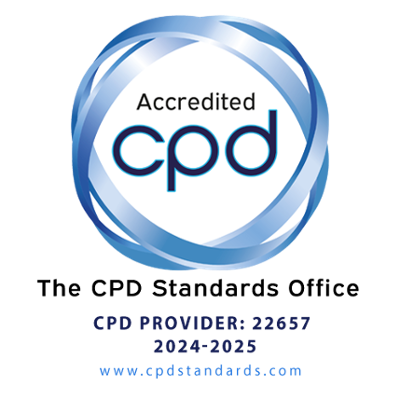
Phoenix STS is an Authorised Training Provider
Phoenix STS is the only company authorised in Ireland to provide train-the-trainer courses on the Elite Emergency Evacuation Chair. The CPD-Certified Evacuation Chair Instructors Course is conducted according to the manufacturer’s recommendations and guidelines, with a maximum of two learners per course. Our instructors undergo extensive refresher training every three years to ensure they are certified to deliver training to the highest possible standard. Phoenix STS ensures that our instructors are current with the manufacturer’s requirements, meet your legal obligations and keep up to date with new regulations in emergency escape procedures for all, including the mobility impaired, by being trained by our officially recognised instructors.
Benefits of the Evacuation Chair Instructor Course
For Individuals Attending:
- Become a Certified and Recognised Evacuation Chair Instructor: Gain a valuable, industry-recognised certification from Phoenix STS. This certification validates your expertise and instructional competency in this critical safety area and enhances your professional profile and credibility.
- Develop Highly Sought-After Instructional Skills: Master Train-the-Trainer methodologies and gain the practical skills to confidently and effectively deliver engaging and impactful evacuation chair training to your colleagues. This is a valuable and transferable skill set.
- Enhance Your Career Prospects: This specialist certification opens doors to career advancement opportunities, potentially leading to roles with greater responsibility in safety management, training, and compliance within your organisation and the wider building management sector.
- Gain In-Depth Knowledge of Evacuation Chair Safety & Best Practices: Develop a comprehensive understanding of evacuation chair types, safe operating procedures, relevant legislation, and best practice guidelines, ensuring you become a true subject matter expert.
- Boost Your Confidence and Competence: Through practical, hands-on training, you’ll build the confidence and demonstrable competence to operate evacuation chairs safely and expertly guide and assess others in their correct usage.
- Make a Real Difference to Building Safety: Directly contribute to a safer building environment for all occupants, knowing you are equipping your colleagues with life-saving skills and promoting a culture of preparedness.
- Professional Development & Personal Growth: Invest in your ongoing professional development and expand your skillset, demonstrating a commitment to safety and continuous improvement.
For Organisations (Buildings/Companies) that Train Staff as Instructors:
- Create In-House Evacuation Chair Expertise: Develop a sustainable internal resource of certified instructors, reducing reliance on external training providers and ensuring consistent, readily available training for all staff.
- Ensure Consistent and High-Quality Evacuation Chair Training: Guarantee that all staff receive standardised, high-quality training delivered by instructors who understand your specific building and equipment.
- Enhance Building Emergency Preparedness: To improve its overall emergency preparedness, ensure your building has trained personnel ready to manage stairwell evacuations effectively and safely.
- Improve Occupant Safety and Reduce Risk of Injury: By having trained instructors and competent staff, you demonstrably enhance the safety of all building occupants during emergencies, minimising the risk of injury and ensuring smoother, more efficient evacuations.
- Demonstrate Proactive Safety Culture: Show a clear and proactive commitment to building occupant safety, enhancing your organisation’s reputation and demonstrating responsible building management.
- Ensure Regulatory Compliance and Best Practice Adherence: Using certified instructors and trained staff, meet and exceed relevant building regulations and safety guidelines related to emergency evacuation and accessibility.
- Cost-Effective Training Solution Long-Term: Developing in-house instructors can be a more cost-effective solution for ongoing staff training than continually hiring external trainers.
- Empower Your Staff and Boost Morale: Empower your staff by investing in their skills and giving them the responsibility of becoming safety champions within your organisation, which can improve staff morale and engagement.
- Reduced Liability and Insurance Benefits: Demonstrating a strong commitment to safety through comprehensive training can reduce liability risks and positively impact insurance premiums.
Course Aims
This Evacuation Chair Instructors Course is specifically designed with the following aims:
- Equip participants with comprehensive instructional skills and in-depth knowledge of evacuation chair types, features, and safe operating procedures, enabling them to confidently train others to a high standard.
- Instil a deep understanding of best practices for evacuation chair operation, focusing on techniques that guarantee the safety and comfort of the chair passenger during ascent and descent of stairways and varied terrains.
- Develop instructor proficiency in demonstrating safe manual handling principles and risk assessment, ensuring both chair operators and those being evacuated are protected from injury throughout the evacuation process.
- Empower graduates to create and deliver engaging and effective evacuation chair training programmes within their organisations, contributing to a culture of enhanced emergency preparedness and occupant safety.
Key Course Objectives of the Evacuation Chair Instructors Course
Upon successful completion of the CPD-Certified Evacuation Chair Instructors Course, participants will be able to:
- Demonstrate proficiency in the safe and correct operation of various evacuation chairs, including pre-use checks, passenger loading and securing, manoeuvring techniques on stairs and level surfaces, and safe unloading procedures.
- Explain the relevant legislation, regulations, and best practice guidelines of evacuation chair use in non-healthcare building environments, including accessibility and emergency evacuation standards.
- Identify key components of evacuation chairs and perform routine pre-use inspections, recognising potential faults and ensuring equipment readiness for emergency deployment.
- Apply safe manual handling principles and techniques when operating evacuation chairs, minimising the risk of injury to both the chair operator and the passenger during training and in real evacuation scenarios.
- Develop and deliver engaging and informative courses on evacuation chair safety and operation tailored to diverse learning styles and participant needs.
- Effectively demonstrate evacuation chair operating techniques to trainees, providing clear, concise, and accurate instructions and practical guidance.
- Assess trainee competency in evacuation chair operation using appropriate methods, providing constructive feedback and identifying areas for improvement.
- Manage a training environment effectively, ensuring a safe, conducive, and inclusive learning space for all participants.
- Communicate clearly and confidently with trainees on all aspects of evacuation chair safety, procedures, and best practices, effectively addressing questions and concerns.
- Adapt training delivery methods to accommodate different learning paces and participant abilities, ensuring comprehensive understanding and skill acquisition across the group.
- Explain the importance of regular evacuation chair maintenance and record-keeping to ensure ongoing equipment safety and regulatory compliance.
- Advocate for regular evacuation chair training and champion best practices in emergency preparedness to promote a strong safety culture within their organisations.
- Confidently answer common questions and address concerns about evacuation chair use, safety procedures, and relevant legislation.
- Select appropriate evacuation chair models based on building types, stairwell configurations, and anticipated user needs, and understand the features and limitations of different chair types.
- Conduct basic risk assessments for evacuation chair use in various building scenarios, identify potential hazards, and implement control measures during training and simulated evacuations.
Who is the CPD-Certified Evacuation Chair Instructors Course for?
- Anyone Interested in Emergency Preparedness: Individuals seeking to enhance their knowledge and skills in emergency evacuation protocols and using evacuation chairs.
- Health and Safety Officers: Individuals responsible for ensuring workplace safety and compliance with emergency evacuation procedures.
- Emergency Response Team Members: Personnel planning and executing emergency evacuations within their organisation.
- Facilities Managers: Those responsible for the maintenance and safety of buildings and facilities, including implementing evacuation planning.
- Occupational Health Professionals: Specialists focusing on the health and safety of employees within the workplace.
- Fire Wardens and Marshals: Designated individuals overseeing fire safety and evacuation procedures.
- Training Coordinators: Professionals responsible for organising and conducting training programs within their organisation.
- Human Resources Managers: HR professionals developing and implementing workplace safety training programs.
- First Aid Responders: Individuals trained to provide immediate assistance in emergencies who want to expand their skills in evacuation procedures.
Learners-Course Requirements
- Age Requirement: Learners must be 18 years of age or older.
- English Language Proficiency: Fluency in English is essential for effective communication during the training. Learners must be able to understand, speak, read, and write in English to fully engage with the course material and participate actively in discussions.
- Prior Training: Learners must have previously attended an Evacuation Chair Training Course to ensure a foundational understanding of the equipment.
- Manual Handling Course: Before attending this training, learners must have completed a Manual Handling Course to ensure they are familiar with safe lifting and handling techniques.
- Appropriate Attire for Practical Training: Learners should wear clothing that allows them to move freely during practical sessions. This ensures their safety and comfort while performing hands-on activities related to evacuation procedures.
- Disclosure of Relevant Medical Conditions: To maintain safety during practical modules, learners are required to disclose any medical conditions that could make physical activities unsafe. This information will be treated confidentially and used solely to ensure the well-being of all learners during the course.
Training Area Requirements
- The centre must provide suitable training areas in line with government guidelines on the management of COVID-19.
What You’ll Learn on the CPD-Certified Evacuation Chair Instructors Course
- Introduction to Evacuation Chairs:
- Overview of evacuation chairs: purpose, design, and types. This introductory module provides a foundational understanding of evacuation chairs. Participants will learn about the core purpose of evacuation chairs: to safely assist individuals with mobility impairments to descend stairways during emergencies when lifts are unavailable. The session will explore the design principles of evacuation chairs, examining key features like tracks, wheels, harnesses, braking systems, and frame construction, understanding how each element contributes to safety and functionality. Crucially, this section will cover the various types of evacuation chairs available, including standard models, tracked chairs, bariatric chairs, and specialised chairs, highlighting their differences, appropriate applications, weight capacities, and specific operational considerations to ensure instructors can advise on the best chair for different building needs.
- Safety Considerations:
- Ensuring the safety of both the chair passenger and the operator. This critical module focuses squarely on safety protocols. Participants will learn detailed procedures and techniques designed to maximise the safety of the chair passenger, including secure harnessing methods, proper posture, communication strategies, and techniques to minimise discomfort or anxiety during evacuation. Equally importantly, the module addresses operator safety, covering correct lifting and manoeuvring techniques, understanding weight limits and chair capabilities, proper footwear and posture, and strategies to prevent back strain and other injuries. Emphasis will be placed on risk awareness and proactive safety measures for both individuals involved in the evacuation. Risk assessment procedures before and during the use of an evacuation chair. This practical session equips instructors with the skills to conduct dynamic risk assessments in evacuation scenarios. Participants will learn to assess potential hazards before an evacuation, including stairwell conditions, obstacles, pinch points, and environmental factors. They will also learn to perform ongoing risk assessments during an evacuation, adapting techniques and routes based on real-time observations, changes in conditions, or unforeseen obstacles. This module emphasises proactive hazard identification and mitigation to ensure the safest possible evacuation process.
- Emergency protocols and contingency planning. This module prepares instructors to train others on equipment operation within a broader emergency response context. Participants will learn about establishing clear emergency protocols for evacuation chair deployment, including communication procedures, designated assembly points, roles and responsibilities of evacuation teams, and liaison with emergency services. It will also cover contingency planning for unexpected events during the evacuation, such as equipment malfunction, blocked routes, or changes in patient condition, equipping instructors to train staff to react effectively to unforeseen challenges and maintain patient safety throughout the emergency.
- Practical Training:
- Step-by-step instructions on the proper use and handling of evacuation chairs. This forms the core practical component of the course. Instructors will learn and practice detailed, step-by-step procedures for every stage of evacuation chair use. This will include pre-use checks, unfolding and setting up the chair, secure passenger loading techniques, harness adjustments, braking system operation, and safe chair folding and storage after use. The emphasis is on precision, safety, and procedural correctness to ensure they can effectively teach these steps to others.
- Techniques for safely transferring individuals to and from the evacuation chair. A crucial element of safe evacuation chair use is the safe transfer of passengers. This section provides hands-on training in various transfer techniques appropriate for different patient mobility levels and physical abilities. Participants will learn best practices for lifting, pivoting, and positioning passengers safely into and out of the chair, minimising strain on both operator and passenger. Techniques for using lifting aids and understanding patient handling principles will be explored to promote safe and dignified transfers.
- Navigating different terrains and obstacles during an evacuation. Evacuation routes are rarely perfectly smooth and level. This practical module prepares instructors to train staff for real-world challenges. Participants will practice manoeuvring evacuation chairs on varied terrains, including carpeted surfaces, hard floors, uneven ground, and thresholds. They will also learn techniques for overcoming obstacles such as doorways, tight corners, and small steps or ramps, developing practical problem-solving skills and adaptability to diverse building environments and potential route obstructions.
- Instructional Techniques:
- Effective teaching methods for training others in the use of evacuation chairs. This section shifts focus to pedagogy. Instructors will learn about various adult learning principles and effective teaching methodologies for practical skills training. They will explore different instructional techniques, including demonstrations, hands-on practice sessions, group exercises, and question-and-answer sessions, learning to engage diverse learners and cater to different learning styles within a training environment to maximise knowledge retention and skill acquisition.
- Creating and delivering engaging training sessions. This module focuses on the practical aspects of designing and delivering effective training. Participants will learn to develop structured and engaging lesson plans tailored to evacuation chair training, incorporating learning objectives, practical exercises, and assessment methods. They will also gain experience in delivering training sessions, practising presentation skills, managing group dynamics, and using visual aids and training materials effectively to create dynamic and impactful training sessions that hold trainee attention and promote active participation.
- Evaluating trainee performance and providing constructive feedback. Effective instruction includes practical assessment. This module equips instructors with various methods for evaluating trainee competency in evacuation chair operation, including practical skills assessments, observation checklists, and questioning techniques. Participants will learn how to provide constructive and actionable feedback to trainees, highlighting areas of strength and areas for improvement in a positive and supportive manner, ensuring trainees develop confidence and refine their skills to the required standard.
- Workplace Integration:
- Assessing the workplace to determine the best locations for evacuation chairs. Evacuation chairs are most effective when strategically placed. This module trains instructors to guide organisations in conducting workplace assessments to identify optimal evacuation chair storage and deployment locations. This includes considering stairwell access points, potential evacuation routes, areas with high concentrations of individuals with mobility limitations, and storage locations that are accessible yet secure and protected from damage. Instructors will learn to advise on factors influencing chair placement for maximum effectiveness in an emergency.
- Customising evacuation plans to incorporate the use of evacuation chairs. Evacuation plans need to be practical and equipment-integrated. This section focuses on incorporating evacuation chairs into existing building evacuation plans. Participants will learn how to review current emergency procedures and identify points where evacuation chairs should be integrated into evacuation routes and staff roles. They will explore how to update evacuation plans to clearly designate evacuation chair locations, responsible personnel, and chair deployment procedures during drills and emergencies, ensuring a seamless integration of equipment into overall emergency preparedness.
- Coordinating with emergency response teams and ensuring seamless integration into safety protocols. Evacuation chair procedures must align with broader emergency response efforts. This module emphasises the importance of coordination and communication with internal emergency response teams (fire marshals, first aiders, etc.) and external emergency services. Participants will learn how to ensure evacuation chair training and procedures are seamlessly integrated into the building’s overall safety protocols, promoting a cohesive and coordinated emergency response strategy that maximises the effectiveness of evacuation chair deployment and patient safety in the broader emergency plan framework.
Our Instructors
Our instructors, experienced in providing fire safety training in a healthcare setting, are the backbone of our course. They will outline the staff’s duties and roles in preventing fire and provide a comprehensive understanding of the necessary actions to respond to a fire within a nursing home. Our instructors are members of professional bodies such as NAHFO, IFE, IOSH, IIESMS, IIRSM, IHEEM, and L&DI. They are also qualified as People Moving and Handling and Evacuation Equipment Instructors and are Infection Control and Safeguarding Adults Qualified, ensuring you receive the highest quality of education. Additionally, all our instructors have achieved a minimum level of recognition with the Institute of Industrial Engineers and Safety Management Systems (IIESMS) at the Fire Safety Technician (FST.IIESMS) level, further ensuring the excellence and reliability of our training programmes.
Training Methods
- Classroom-Based Presentations: We utilise structured PowerPoint presentations to deliver theoretical knowledge, covering essential topics such as legislative frameworks, evacuation planning, and equipment overviews.
- Hands-On Demonstrations and Practice: Learners engage in practical sessions where they can handle and operate evacuation chairs, reinforcing their understanding through direct application.
- Mock Training Sessions with Peer Feedback: Learners conduct simulated training scenarios, allowing them to practice instructional techniques and receive constructive feedback from peers and instructors.
- Use of Rescue Training Manikins: We incorporate rescue training to ensure safety during practical exercises. These manikins, such as those provided by Ruth Lee, are designed for realistic rescue and evacuation training, enabling learners to practice handling and manoeuvring techniques effectively.
Assessment Components
The assessment components of the CPD-Certified Evacuation Chair Instructors Course are designed to comprehensively evaluate learners’ theoretical knowledge, practical skills, and instructional abilities. The assessment framework includes:
- Practical Skills Evaluation:
- The learner’s proficiency in handling and operating evacuation chairs will be assessed through hands-on exercises.
- Emphasis will be placed on safety protocols, equipment deployment, and effective evacuation techniques.
- Instructional Competency Assessment:
- Learners are required to design and deliver a ‘mock’ training session, simulating real-world instructional scenarios.
- This component evaluates the ability to convey information clearly, engage learners, and effectively teach the use of evacuation equipment.
- Peer and Instructor Feedback:
- Both peers and instructors will provide constructive feedback during practical exercises and mock training sessions.
- This feedback aims to identify strengths and areas for improvement, fostering a collaborative learning environment.
- Continuous Assessment:
- Throughout the course, learners will be continuously assessed on their engagement, participation, and adherence to safety protocols.
- Instructors will monitor progress to ensure consistent development of competencies.
Successful completion of all assessment components is mandatory for certification. This ensures that learners are well-prepared to instruct others in the safe and effective use of evacuation equipment in various healthcare settings.
Certification
To achieve certification, learners are required to deliver a ‘mock’ training session as part of their assessment. Upon successful completion, learners will receive a Phoenix STS Training certificate accredited by Exitmaster, valid for five years. To maintain competency, it is recommended that learners undergo refresher training every five years.
Maximum Number of Learners
The course is designed to accommodate up to 4 learners, facilitating practical peer training sessions. This class size allows for optimal interaction, enabling learners to engage in practical exercises and collaborative learning and enhance their instructional skills in evacuation procedures.
Duration
The CPD-Certified Evacuation Chair Instructors Course is delivered over 6.5 hours, allowing adequate theoretical learning and practical application time. This comprehensive duration ensures that learners have sufficient opportunities to practice and demonstrate the skills covered in the course modules.
Frequently Asked Questions
How to train staff on evacuation chairs?
Are you looking for evacuation chair training for your staff? This course provides instructor training, enabling your team to confidently train others in the safe use of evacuation chairs for emergency situations.
Where can I find an evacuation chair instructor training in Ireland?
Phoenix STS offers on-site evacuation chair instructor training across Ireland, delivered at your workplace for maximum convenience and relevance.
What is the best evacuation chair training course?
Our Evacuation Chair Instructor Course is a highly practical, one-day programme equipping individuals to become certified trainers in evacuation chair procedures. Learn from experienced instructors.
Emergency evacuation training for disabled people in the workplace?
Ensure your workplace is prepared for emergency evacuations of disabled individuals. This course focuses on evacuation chair use, a key element of accessible emergency planning.
Do we need evacuation chair training under Irish law?
Irish regulations and guidance recommend adequate training in emergency evacuation procedures, including using evacuation chairs where provided. This instructor course helps you meet your legal responsibilities.
How to use evacuation chairs safely?
Safe operation of evacuation chairs is crucial. This course provides in-depth practical training on safe techniques for ascending and descending stairs with evacuation chairs.
Evacuation chair training certification for instructors?
Upon completing our course, you’ll receive a Phoenix STS certificate, qualifying you to instruct others in evacuation chair use and demonstrate your competence.
On-site evacuation chair training Ireland?
Phoenix STS specialises in delivering on-site evacuation chair training throughout Ireland, directly bringing expertise and equipment to your organisation.
Workplace evacuation chair training course cost?
For pricing on our workplace evacuation chair instructor course, please contact us directly for a bespoke quote based on your organisation’s needs and number of delegates.
Become an evacuation chair trainer?
This one-day Evacuation Chair Instructor Course provides you with the skills and knowledge to become a confident and certified evacuation chair trainer within your workplace.
Evacuation chair manual handling training?
This course includes essential manual handling techniques specific to evacuation chairs, ensuring safe and comfortable operation for both the operator and the person being assisted.
Fire evacuation chair training for staff?
Prepare your staff for fire emergencies. Evacuation chair training is vital for safely evacuating individuals with mobility impairments during fire drills and emergencies.
Accessible emergency evacuation plan training?
Develop a comprehensive and accessible emergency evacuation plan. This course focuses on the practical aspects of using evacuation chairs as part of an inclusive evacuation strategy.
Stair chair training for emergencies?
Learn to use stair chairs (evacuation chairs) effectively in emergencies. Our instructor course provides hands-on training for safe and efficient stairwell evacuations.
Evacuation chair maintenance training?
Beyond operation, this course covers routine maintenance checks for evacuation chairs, ensuring equipment is ready for use when needed and prolonging its lifespan.
Legislation for evacuation chair training in Ireland?
Understand the Irish legislation and guidelines regarding emergency evacuation and evacuation chair provision. Our course includes a module on legal compliance.
Evacuation chair pre-use checks training?
Learn the vital pre-use checks necessary to ensure evacuation chairs are safe and ready for operation. This course module emphasises safety and equipment preparedness.
Who needs evacuation chair instructor training?
This instructor qualification will benefit health and safety officers, facilities managers, trainers, and anyone responsible for workplace emergency procedures and staff training.
Book evacuation chair instructor course Ireland?
To book your on-site Evacuation Chair Instructor Course in Ireland, contact PhoenixSTS today. Use the ‘Book Now’ button or contact details to discuss your training needs.

